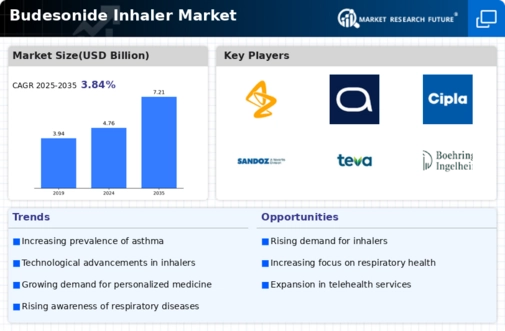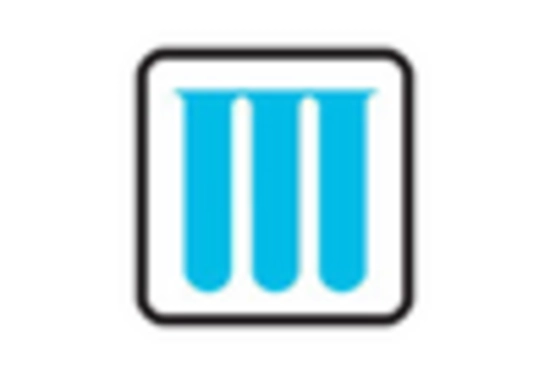Rising Incidence of Allergic Rhinitis
The Budesonide Inhaler Market is also influenced by the rising incidence of allergic rhinitis, which is often associated with asthma and other respiratory conditions. As more individuals are diagnosed with allergic rhinitis, the demand for effective treatment options, including budesonide inhalers, is likely to increase. This trend is particularly evident in urban areas where environmental factors contribute to higher rates of allergies. The growing recognition of the link between allergic rhinitis and asthma management is expected to drive the Budesonide Inhaler Market, as healthcare providers seek comprehensive treatment solutions for their patients. Consequently, the market may see an uptick in the adoption of budesonide inhalers as part of a broader therapeutic strategy.
Regulatory Support for Inhalation Therapies
The Budesonide Inhaler Market is supported by favorable regulatory frameworks that encourage the development and approval of inhalation therapies. Regulatory agencies are increasingly recognizing the importance of effective respiratory treatments, leading to streamlined approval processes for new inhalers. This regulatory support is likely to foster innovation and competition within the Budesonide Inhaler Market, as companies are incentivized to bring new products to market. Additionally, the emphasis on patient safety and efficacy in inhalation therapies is expected to enhance consumer confidence, further driving market growth. As regulations evolve, the Budesonide Inhaler Market may witness an influx of novel products that cater to diverse patient needs.
Growing Awareness of Asthma and COPD Management
The Budesonide Inhaler Market is benefiting from a growing awareness of asthma and chronic obstructive pulmonary disease (COPD) management. Educational initiatives aimed at both healthcare professionals and patients are fostering a better understanding of these conditions and the importance of adherence to prescribed therapies. As awareness increases, the demand for effective inhalation therapies, including budesonide inhalers, is likely to rise. According to recent data, the prevalence of asthma and COPD is projected to increase, further driving the need for effective management solutions. This heightened awareness is expected to create a favorable environment for the Budesonide Inhaler Market, as patients seek reliable treatment options.
Technological Innovations in Drug Delivery Systems
The Budesonide Inhaler Market is experiencing a surge in technological innovations that enhance drug delivery systems. Advanced inhaler designs, such as smart inhalers equipped with sensors, are being developed to improve patient adherence and monitor usage patterns. These innovations not only facilitate better management of respiratory conditions but also provide valuable data for healthcare providers. The integration of digital health technologies is likely to transform the landscape of the Budesonide Inhaler Market, making inhalation therapy more effective and personalized. Furthermore, the increasing demand for user-friendly inhalers is driving manufacturers to invest in research and development, potentially leading to a more competitive market environment.
Increased Investment in Respiratory Health Research
The Budesonide Inhaler Market is poised for growth due to increased investment in respiratory health research. Governments and private organizations are allocating substantial resources to study respiratory diseases and develop innovative treatment options. This influx of funding is likely to accelerate the discovery of new formulations and delivery methods for budesonide inhalers, enhancing their efficacy and patient compliance. Moreover, research initiatives focusing on personalized medicine may lead to tailored inhalation therapies that address specific patient needs. As the Budesonide Inhaler Market evolves, the emphasis on research and development is expected to yield significant advancements, ultimately benefiting patients and healthcare providers alike.


















Leave a Comment